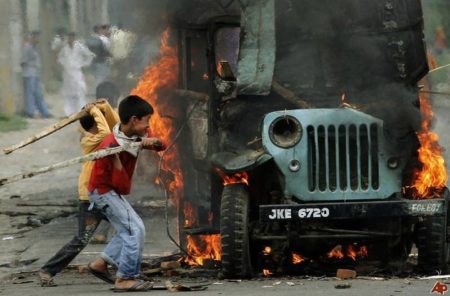
This article was originally published on War on the Rocks on 14 September 2016.
India’s Kashmir Valley has been the scene of a Pakistan-backed insurgency since the 1990s. The Indian army and its associated security forces have been engaged in fighting this insurgency and assisting the civil administration in maintaining law and order. On July 8, the Pakistani terrorist group Hizb-ul-Mujahideen’s commander in Kashmir, Burhan Wani, was killed in an encounter with security forces in Kashmir’s Anantnag district. Wani’s death plunged the state into deep turmoil, pitting Indian security forces against a large number of disenfranchised Kashmiri youth sympathetic to Wani’s anti-India resistance movement and calls for jihad. A full-blown confrontation between incensed youth and Indian security forces followed that resulted in 68 civilian deaths and over 2000 injured protestors, leaving an embarrassed Indian state facing a crisis of governance with no clear plan to prevent escalating violence. Exposing the fragility of the Indian state further, the Indian military publicly declared its frustration with political directives. In an unprecedented step, a strict curfew imposed in the Kashmir valley during Eid celebrations has renewed a fresh cycle of violence between protestors and security force, killing two protestors and injuring several more. New Delhi appears to be running out of options to de-escalate levels of violence.
